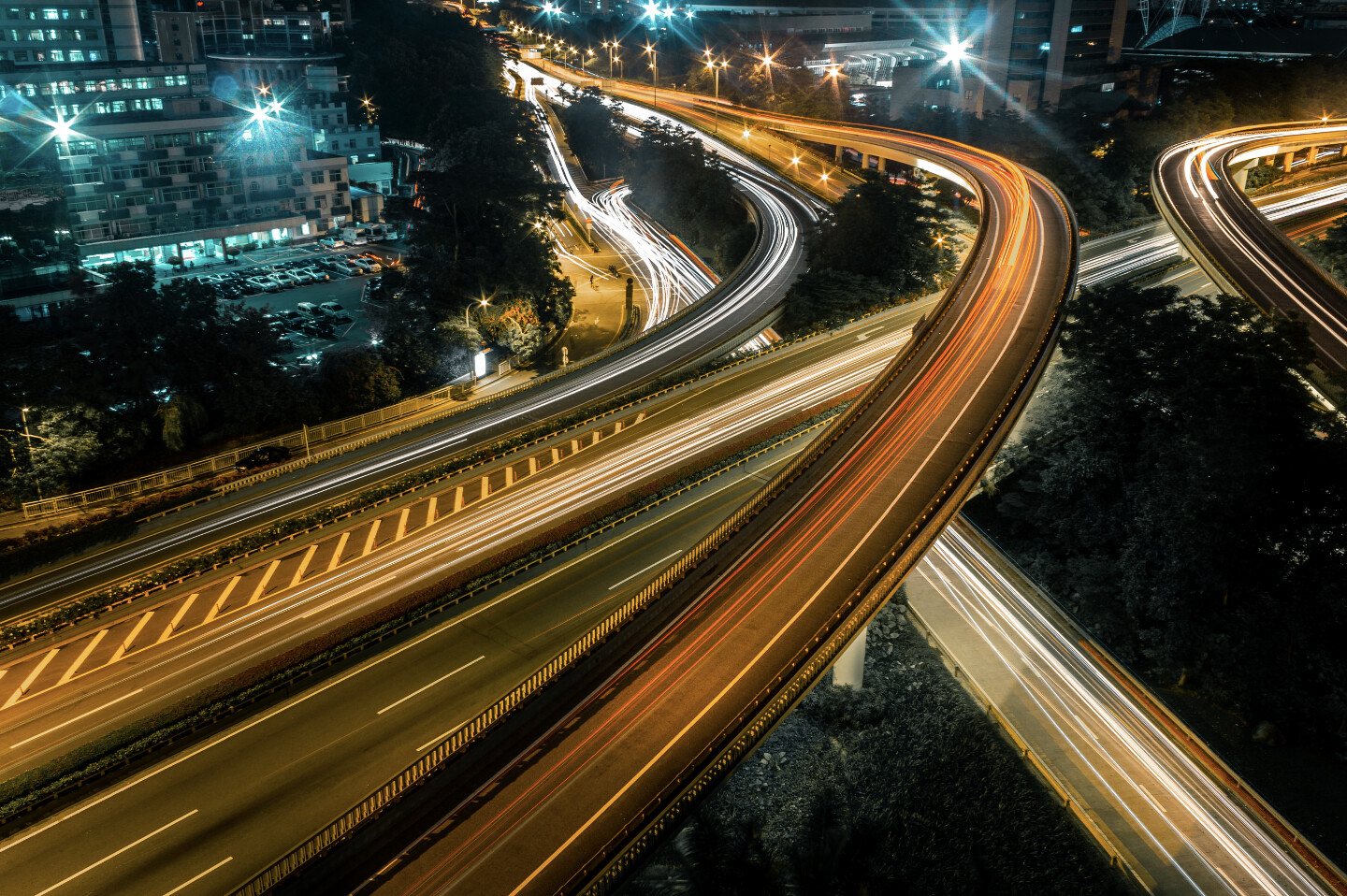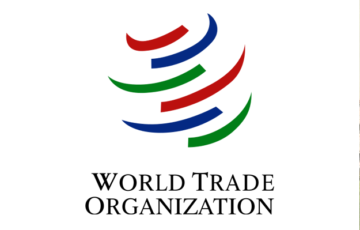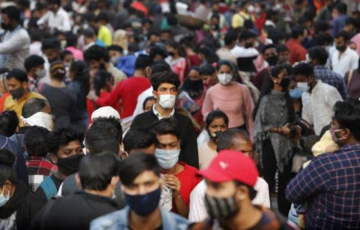INFRASTRUCTURE
The Vital Role of Infrastructure in Economic Development
- Infrastructure represents the fundamental physical systems and facilities that underpin the functioning of a society, including its economy. Renowned economist Dr. V.K.R.V. Rao emphasizes the continuous relationship between infrastructure and development, suggesting that infrastructure is not just a prerequisite for economic growth but a concurrent element that evolves alongside and supports development continuously. This idea posits infrastructure as a foundational component that must be developed and expanded in parallel with a country’s economic growth to sustain a self-accelerating process of development.
The Significance of Infrastructure
Economic Efficiency and Employment
- Infrastructure is crucial for the smooth operation of the economy, acting as the “wheels of development” without which economic activities would face significant hurdles. It plays a vital role in creating employment opportunities, enhancing labor productivity, and facilitating industry growth and agricultural development.
Boosting Production and Industry
- Improvements in infrastructure, such as transportation and education, directly contribute to increased production levels. The advancement of science and technology, fueled by infrastructure development, is essential for economic growth. Additionally, a strong infrastructure base encourages investment and is a critical factor for the expansion of the industrial sector.
Social Transformation and GDP Growth
- Infrastructure development is a key driver for social change, influencing people’s perspectives as industries and educational systems evolve. A direct correlation exists between infrastructure spending and GDP growth, where even a modest increase in infrastructure investment can significantly boost per capita GDP.
Addressing Underdevelopment and Regional Inequalities
- Infrastructure plays a pivotal role in advancing underdeveloped areas and mitigating regional disparities, ensuring more equitable economic opportunities across different regions.
Challenges in Infrastructure Development
Regulatory and Financial Hurdles
- Infrastructure projects often face delays due to regulatory and approval challenges, compounded by financial constraints. Land acquisition issues, environmental regulations, and capacity limitations among private players further exacerbate these challenges.
Government Initiatives and Investment
- To overcome these obstacles, significant investments and policy reforms are essential. The Indian government has pledged substantial funds towards infrastructure development, including the National Infrastructure Pipeline (NIP), aiming to bolster long-term economic growth and address the demands of a rapidly urbanizing population.
ENERGY INFRASTRUCTURE
- Rapid Increase in Consumption: India’s energy consumption has more than doubled since 2000, driven by population growth, urbanization, continued industrialization, and its status as the world’s fastest-growing economy. This trend is expected to continue, indicating a significant rise in energy demand in the coming years.
- Challenges to Economic Growth: Meeting the energy needs of the population while targeting an 8% economic growth presents a substantial challenge. It necessitates a concerted effort to enhance energy efficiency and maximize domestic production capabilities.
Issues in the Energy Sector
- Increase in Power Consumption: In April 2022, there was a 13.6% year-over-year increase in power consumption, driven by the economic recovery post-COVID-19 and an early start to summer.
- Coal Dependency and Lack of Regulation: India ranks fifth globally in coal reserves and has extensive plans for power expansion requiring coal. However, there is no regulator for coal, posing a significant challenge.
- Hydroelectric Plants and Interstate Disputes: The development of hydroelectric plants is complicated by interstate disputes and the challenge of managing river flows, leading to frequent water shortages.
- Solar Cell Production: Despite significant advancements globally, India lags in the production of basic silicon mono-crystalline solar cells and is ranked significantly behind leading countries.
Government Initiatives
- National Infrastructure Pipeline: An allocation of Rs. 111 lakh crore (US$ 1.4 trillion) for 2019–25, with the energy sector expected to contribute 24% of capital expenditures.
- Ultra-Mega Power Plants (UMPPs): Plans to construct five new UMPPs, each costing about Rs 1 lakh crore.
- Public-Private Partnership (PPP) Model in Odisha: Aims to construct a 1,000 MW solar power park with an estimated cost of Rs 6,500 crore (US$ 1 billion).
Road Infrastructure
- The road infrastructure in India serves as a crucial backbone for the country’s economic and social fabric, significantly influencing its growth and development trajectory.
India’s Road Network
- India boasts the second-largest road network globally, extending over 5.89 million kilometres. This expansive network plays a pivotal role in the nation’s logistics and transportation framework, handling 90% of passenger traffic and 64.5% of all goods transportation. The continuous expansion and improvement of road connectivity across cities, towns, and villages have progressively amplified road travel over time.
Budgetary Highlights and Road Sector Development
Key Highlights of Budget 2022-23
- The Ministry of Road Transport and Highways witnessed a substantial budget increase of 68%, with ₹1,99,107.71 crore allocated in the Union Budget 2023.
- A significant goal was set to expand the National Highways network by 25,000 km within 2022-2023.
- The government aims to raise ₹20,000 crore through innovative financing methods for road projects, with plans to operationalize four out of 35 multimodal logistics parks in the upcoming fiscal year.
- The PM Gati Shakti initiative, focusing on coordinated infrastructure development planning, emerged as a cornerstone of the budgetary framework.
Union Budget 2023-24 Enhancements
- An increased outlay of ₹2.70 lakh crore was allocated for the highways sector.
- The National Highways Authority of India (NHAI) received a 13.90% budget increase, amounting to ₹1.62 lakh crore for 2023-24.
Significance of the Road Sector
- Enhancing social connectivity by improving access to healthcare and education.
- Stimulating economic growth through increased investment in road infrastructure.
- Supporting the manufacturing sector, exports, and initiatives like “Make in India”.
- Creating employment opportunities, thereby mitigating rural distress.
- Ensuring the rapid transportation of perishable goods.
- Bolstering national security through strategic border roads.
- Improving urban public transport systems and contributing to several Sustainable Development Goals (SDGs).
Challenges Facing Road Infrastructure Development
- High accident rates and safety concerns.
- Legislative gaps leading to unregulated old vehicle usage.
- Insufficient surveillance infrastructure, impacting accident investigations.
- Inadequate road traffic engineering for two-wheelers and pedestrians.
- The shortfall in maintenance funding for national highways.
- Capacity constraints within the existing national highways network.
- Delays and cost escalations in land acquisition.
- The lack of quality driving schools and standardized driving regulations.
Government Initiatives for Road Sector Enhancement
- The Gati Shakti program aims to streamline project approvals through digital platforms.
- Significant financial investments in projects like the Trans-Arunachal Highway and Kaladan Multi-Modal Transport Project.
- Increased allocation for the central road fund in the Union Budget 2022-23.
- Introduction of the Vehicle Scrapping Policy to phase out old, inefficient vehicles.
- Projects to improve road quality and safety, including weather-resistant roads in Agartala and regulations for commercial vehicle operations.
Railway Infrastructure
- The railway infrastructure plays a crucial role in a country’s economic development by facilitating the efficient movement of goods and people. Indian Railways, the world’s fourth-longest rail network, exemplifies this role, handling a vast daily traffic of passengers and freight over its extensive network.
Indian Railways
- Extensive Network and Operations: Indian Railways operates on a vast network of 70,000 kilometers of track, running 21,000 trains daily to transport 23 million passengers and 3 million tonnes of freight.
- Employment and Economic Efficiency: Approximately 1.3 million people are employed directly or indirectly by Indian Railways, which offers transportation at a lower cost compared to road transport, making it an economical choice for freight and passenger movement.
- Government Initiatives: The government aims to transform railways into a safe, fast, and reliable mode of transportation for both goods and passengers. Initiatives like the Indian Railway Management Service are part of this modernization effort.
- Investment and Development: With 100% Foreign Direct Investment (FDI) permitted under the automatic route, significant investments are directed towards the modernization and expansion of the rail network. The Union Budget 2023-24 has allocated an unprecedented amount for the railways, indicating the sector’s vital role in the country’s economic framework.
Significance of Railways
- Cost-Effective Transportation: Railways offer a cheaper and convenient option for long-distance travel and bulk goods transport, making them essential for economic activities and accessibility.
- Economic Development: By facilitating the movement of goods and raw materials, railways contribute significantly to the agricultural and industrial sectors’ growth.
- National Integration and Security: The widespread railway network promotes national integration and plays a crucial role in defense and internal security by ensuring the rapid movement of troops and equipment.
- Disaster Mitigation: During emergencies, railways have been instrumental in delivering aid and providing transport solutions, demonstrating their importance in national resilience.
Challenges Facing Indian Railways
- Need for Modernization: To keep pace with economic growth, Indian Railways requires administrative, engineering, and technological reforms to improve efficiency and sustainability.
- Safety Concerns: Despite being a crucial transport mode, railways face challenges in ensuring passenger and freight safety, with several accidents reported annually.
- Resource Constraints: Compared to global counterparts, Indian Railways’ investment in infrastructure is relatively low, affecting its expansion and modernization capabilities.
- Operational Costs: Rising operational costs, partly due to competing transportation modes like air travel, pose financial challenges.
Recommendations and Way Forward
- Privatization and Investment: Encouraging private investment in railways can lead to better infrastructure, enhanced safety, and improved service quality.
- Modernization of Infrastructure: Adopting modern technologies and practices, such as LHB coaches and advanced signalling systems, can significantly improve operational efficiency and safety.
- Rationalizing Fares and Subsidies: A balanced approach to pricing and subsidies is necessary to make passenger and freight services financially sustainable.
- Organizational Reforms: Structural reforms, including decentralization and the introduction of a tariff regulator, can enhance decision-making and operational efficiency.
Aviation Infrastructure
- The aviation infrastructure in India represents a dynamic and rapidly expanding sector, playing a critical role in the nation’s economic and strategic landscape. It encompasses various segments, including scheduled and non-scheduled air transport services, air cargo services, and a burgeoning network of airports. This overview dives into the evolution, current status, and future prospects of India’s civil aviation industry, elucidating the largest aviation industries, passenger and freight traffic, the significance of the aviation sector, challenges faced, and strategic initiatives for growth.
Largest Aviation Industries in India
- India’s aviation market has experienced significant growth, becoming the third-largest domestic aviation market globally. With a substantial contribution to the GDP and the creation of millions of jobs, the industry’s expansion is evident in the increasing number of airplanes and the capacity to accommodate a massive influx of air passengers annually. The country’s strategic aim to expand its airport capacity and the expected growth in airplane numbers highlight the industry’s upward trajectory.
Passenger and Freight Traffic
- The industry has seen a steady increase in passenger and freight traffic over the years, with projections indicating potential for substantial growth. The government’s efforts to enhance airport infrastructure to support this growth are evident in the increasing number of operational airports and the ambitious target set for the coming years. This expansion is vital for catering to the rising air traffic demand.
Significance of the Aviation Sector
- It’s the fastest mode of transport, enabling efficient passenger and goods transportation.
- It stimulates economic growth, supports job creation, and facilitates international trade and tourism.
- Its strategic importance is undeniable, providing vital capabilities for national security.
- Air transport is essential in emergencies, offering a lifeline during natural calamities.
- The sector also plays a critical role in the education and skill development of aviation professionals.
Difficulties Facing the Indian Aviation Sector
- Despite its growth, the aviation sector faces numerous challenges, including regulatory gaps, infrastructure deficiencies, high operational costs, and a struggling Maintenance, Repair & Overhaul (MRO) sector. Addressing these issues is essential for the sector’s continued expansion and competitiveness.
Ports and Waterways Infrastructure
Ports in India
- India has 12 major and 205 notified minor and intermediate ports. Under the National Perspective Plan for Sagarmala, six new mega ports will be developed in the country.
- Primary Ports: Major Ports are governed under the Indian Ports Act of 1908 and the Major Port Trust Act of 1963 and fall within the Union List of the Indian Constitution. A Board of Trustees that the Indian government has constituted oversees each major port. They are responsible for port management, planning, and operations.
- Minor ports: They are administered by the State’s port management department or, if one has been established, the State Maritime Board, as is the case in Gujarat, Maharashtra, and Tamil Nadu. The State maritime boards have comparable responsibilities to port trusts, including the power to determine tariffs.
Reduction in Logistic Costs and Traffic Management
- The development of a network of linked inland waterways could revolutionize national logistics, easing traffic congestion on roads and highways by facilitating the movement of cargo via waterways. This not only alleviates road traffic but also presents a cost-effective and efficient logistics solution.
Land Acquisition
- Unlike land-based transportation infrastructure, waterways circumvent the complexities and controversies associated with land acquisition. This makes them an appealing option for development, avoiding time and cost overruns that have plagued numerous projects.
Cost-Effectiveness and Reliability
- Waterways offer a more economical mode of transportation, significantly reducing the costs associated with moving goods. Studies, like the RITES report, highlight the superior fuel efficiency of water-based transport over road and rail alternatives.
Inland Waterways
- India’s vast network of navigable waterways, including rivers and canals, remains underutilized despite its potential to transform the transportation landscape, comparing unfavorably with usage rates in countries like Bangladesh and Germany.
Historical and Modern Importance
- India’s maritime trade history underscores the long-standing importance of waterborne commerce. Modern trade heavily relies on maritime transport, with a significant portion of India’s trade volume moving through its ports.
Government Support
- The Indian government’s commitment to the port industry is evident through 100% FDI permissions, tax holidays, and significant budget allocations aimed at developing infrastructure and enhancing operational efficiency.
Significance and Challenges
Climate Change
- The warming Indian Ocean and its impact on marine ecology underline the environmental challenges facing maritime infrastructure.
Infrastructure and Logistics Bottlenecks
- Issues like port congestion, inadequate rail and road linkages, and inefficient hinterland transportation undermine the competitiveness of Indian ports.
Waterway Management
- Variability in water levels, navigational challenges, and the high cost of dredging are significant obstacles to the effective utilization of inland waterways.
Government Initiatives and Way Forward
Technological Upgrades and Policy Reforms
- Investments in technology, legislative reforms like the Draft Indian Ports Bill 2021, and the Marine Aids to Navigation Bill 2021 are steps toward modernizing and enhancing the efficiency of India’s port and waterway infrastructure.
Public-Private Partnerships
- Encouraging private sector involvement through initiatives like the Major Port Authorities Bill, 2020, and the Model Concession Agreement aims to boost investment and operational efficiency.
Future Strategies
- Expanding resource allocation, embracing cost-effective and sustainable waterway transport, opening up the dredging market, and accelerating the Sagarmala Programme are key to realizing the full potential of India’s maritime infrastructure.
Conclusion
- For India to become a developed nation by 2047, with a robust economy driven by exports, investments, and domestic demand, it must prioritize the development of world-class port and waterway infrastructure. This will enhance competitiveness on a global scale, ensuring sustainable growth and environmental stewardship.
UPSE PREVIOUS YEAR QUESTIONS
1. “Investment in infrastructure is essential for rapid and inclusive economic growth.” Discuss in the light of India’s experience. (2021)
2. Explain the meaning of investment in an economy in terms of capital formation. Discuss the factors to be considered while designing a concession agreement between a public entity and private entity. (2020)
3. The public expenditure management is a challenge to the government of India in the context of budget making during the post-liberalization period. Clarify it. (2019)
4. With growing energy needs should India keep on expanding its nuclear energy programme? Discuss the facts and fears associated with nuclear energy. (2018)
5. Access to affordable, reliable, sustainable and modern energy is the sine qua non to achieve Sustainable Development Goals (SDGs). Comment on the progress made in India in this regard. (2018)
6. Examine the developments of Airports in India through Joint Ventures under Public-Private Partnership (PPP) model. What are the challenges faced by the authorities in this regard? (2017)
7. “Industrial growth rate has lagged behind in the overall growth of Gross-Domestic-Product (GDP) in the postreform period” Give reasons. How far are the recent changes in Industrial policy capable of increasing the industrial growth rate? (2017)










